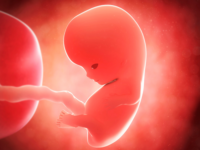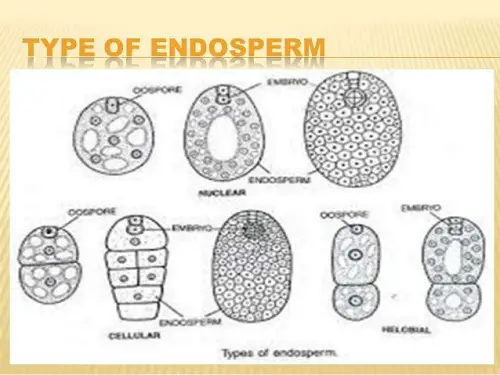What are Monozygotic twins?
The development of monozygotic twins arises through a singular, fertilized embryo, splitting into two. A fertilized embryo develops from a zygote, which is formed through the fusion of a singular egg, with a singular sperm. As monozygotic twins develop through this splitting of a single embryo, both individual twins share identical chromosomes. As such, their genetic codes are identical. Given this identical genetic code, monozygotic twins are therefore called identical twins, or are sometimes referred to as maternal twins.
As each monozygotic twin comes from the same embryo, both individuals have the same gender. The conception of monozygotic twins is relatively rare, with the approximate birth rate of conceiving monozygotic twins being only 3 in every 1,000 pregnancies. The separation degree between the twins, inside of the uterus, is dependent upon time. This means that the separation of both the amniotic sac (amniosity), and the chorion (Chorionicity), depends on the moment in time that the separation occurs.
A third of all monozygotic twins develop from a separate placenta, and an amniotic sac, within the uterus. In this situation, they are known as dichorionic-diamniotic twins or Di-Di twins. These Di-Di twins form through a splitting of the singular embryo, in a 2-3 day time period following fertilization. Two-thirds of all monozygotic twins actually share a singular placenta, with two independent amniotic sacs. These are called monochorionic-diamniotic twins or Mono-Di twins. Mono-Di twins form through the splitting of an embryo in a 3-8 day period following fertilization. Approximately 1% of all conceived monozygotic twins, also share an amniotic sac, and are called monochorionic-monoamniotic or Mono-Mono twins. These Mono-Mono twins, form through a splitting of an embryo within an 8-13 day period following fertilization.
Conjoined twins, develop through a splitting of an embryo after a 13 day period following fertilization. As the embryo has split at such a late point in time, it results in the creation of twins whom have joined body parts.
We currently do not know what causes monozygotic twins, however it is known that it is not hereditary.
What are Dizygotic twins?
The development of dizygotic twins arises following two separate fertilization events, of two different eggs each with a fusion with two different sperms. As dizygotic twins develop through two independent fertilization events, each twin is genetically varied, the same as with any other two non-identical siblings. Given this genetic variation, each twin’s gender can also be different from one another. The twin combination can either be boy/boy, girl/girl or girl/boy, and are called either non-identical twins, or are sometimes referred to as fraternal twins.
The formation of dizygotic twins, occurs through hyper-fertilization and is hereditary.
The conception occurrence of dizygotic twins, is dependent upon the population in question. The highest proportion of dizygotic twins is in African-American populations, while the lowest proportion is found in Asian populations. In Japan for example, there are 6 monozygotic twin births in every 1,000 births. In some parts of Africa, this proportion is as high as 20 per 1,000 births. All dizygotic twins around the world are dichorionic-diamniotic.
Similarities between Monozygotic and Dizygotic twins
- Both individuals in both monozygotic and dizygotic twins have different fingerprints
What is the difference between Monozygotic and Dizygotic twins?
- Development: With monozygotic twins, their development is initiated through a single fertilized embryo splitting into two. This is in contrast to dizygotic twins, whose development is initiated through two independent fertilization events, but that happen at exactly the same time.
- Causes: The causes as to how and why monozygotic twins develop are currently unknown. However, dizygotic twins are known to occur either through In Vitro Fertilization (IVF), a hereditary predisposition caused by hyper-ovulation, or through certain fertility drugs.
- Name usage: Identical twins is the name given to monozygotic twins, given their extremely similar physical appearance. Given their non-identical appearance, dizygotic twins are known as fraternal twins.
- Genetic code: In a monozygotic twin pair, both individuals share an almost identical genetic code. Dizygotic twins on the other hand, do not, and their genetic codes are as similar to the same degree, as any other non-identical sibling would be.
- Twin gender: Monozygotic twins are always the same gender, whereas the gender of each dizygotic twin can be different.
- Blood type: Blood type is always the same for both monozygotic twins, however, each dizygotic twin can have a different blood type.
- Appearance: Monozygotic twins share an extremely similar, if not identical appearance, however they can vary slightly to each other depending upon environmental factors that they are exposed to. With dizygotic twins, their appearance is as similar to each other, as would be expected with any other non-identical sibling.
- Likelihood: There is a uniform likelihood of conceiving monozygotic twins, anywhere around the world. However, the conception likelihood of dizygotic twins is known to vary considerably, depending on the country and population they were conceived in.
- Occurrence: A third of all twins that are conceived worldwide are monozygotic. The chance of conceiving dizygotic twins is much higher, with two-thirds of all twins worldwide being dizygotic.
- Hereditary: There is no hereditary predisposition to conceiving monozygotic twins, however there is a hereditary element to conceiving dizygotic twins.
- Inside the Uterus: All monozygotic twins are either Mono-Di, Mono-Mono or Di-Di twins. With dizygotic twins, they are only ever Di-Di twins.
- Twin-to-Twin Transfusion Syndrome (TTS) Risk: There is a high risk of TTS in monozygotic twins, however, the risk of TTS is dizygotic twins is much lower when compared with monozygotic twins.
Table of Comparison

Summary
- The two major twin types found around the world are monozygotic and dizygotic twins.
- The creation of monozygotic twins occurs through a singular fertilized egg splitting into two. As both individuals come from the same embryo, they both have the same genetic code, and as such, both twins are extremely similar or identical in appearance, displaying similar phenotypic characteristics.
- As they originate from the same embryo, monozygotic twins are always the same gender.
- Dizygotic twins are created through two independent fertilization events. Two different eggs each fuse with a different sperm, with both events occurring at the same time. As each twin comes from a different embryo, both individuals vary genetically from one another.
- Hyper-ovulation is the primary cause of dizygotic twins; however, they can also be caused through the use of In Vitro Fertilization, or certain fertility drugs.
- The primary difference between the two types of twins, is how they develop inside of the uterus.
- The only similarity between monozygotic twins and dizygotic twins is that each twin’s fingerprints, in both twin types, are different.
Author: Alex Hammond
Alexander Hammond hold a first-class master’s degree in Ecology. He has conducted a number of international research projects in Indonesia, Belize and the UK, in the areas of Marine Biology, Terrestrial Ecology and Conservation. Several of his research reports have been published.












Leave a Reply